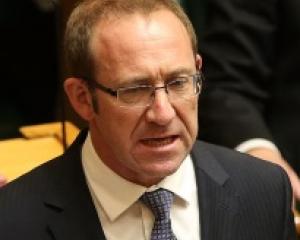
Westpac chief economist Dominick Stephens said his concern was that the Treasury's strong growth forecasts in later years would not eventuate.
The level of earthquake-related building activity in Canterbury had already peaked and by 2017, Westpac expected to have reached a phase of several years of decline.
Falling earthquake-related construction, along with lower net inward migration, would see economic growth, as measured by gross domestic product (GDP), slow to as little as 1.4% in 2019, by Westpac forecasts.
By comparison, the Treasury still expected growth to be rattling along at 2.7% by that time, Mr Stephens said.
"If growth turns out more in line with our forecasts, then something will have to give - either surpluses will be smaller and net debt will be higher, or some difficult decisions will need to be made about spending plans.
"The desire to deliver income tax cuts will certainly have to be tempered.''
Finance Minister Bill English said in his Budget 2016 speech New Zealand's economic outlook was positive.
The Treasury was forecasting real GDP growth of about 2.9% in the coming year and 2.8% on average over the five years to June 2020.
About 200,000 more people were in work now than three years ago and another 170,000 new jobs were expected by 2020.
During that period, the unemployment rate was expected to drop to 4.6% and the average wage was forecast to rise to $63,000.
"Only a handful of developed economies enjoy such a positive outlook.''
Strong population growth was both an indicator of New Zealand's economic performance and a contributor to it.
For the first time in a generation, New Zealand had a net annual movement of people into this country from Australia, rather than an exodus of Kiwis across the Tasman, he said.
The surplus target in the past seven Budgets had helped turn the books around.
The focus now was on shifting more to debt repayment, Mr English said.
Government priorities over the next few years were. -
● Maintaining rising operating surpluses.
● Reducing net debt to around 20% of GDP by 2020.
● If economic and fiscal conditions allow, beginning to reduce income taxes.
● Using any further fiscal growth to reduce debt faster.
"Budget 2016 forecasts confirm the Government is on track and its books are in good shape.''
ASB chief economist Nick Tuffley said the "20% net debt by 2020'' was the new "return to surplus by 2015''.
However, the lower and rapidly falling net debt track was this year's Budget highlight.
Net debt peaked in 2016-17 nearly 2% lower than previous forecast. From there net debt fell rapidly, reaching 20.8% by 2019-20.
"The Minister of Finance reaches his debt target in this forecast horizon, but we wonder why the need for such a strong focus? From where we sit, low debt, which New Zealand already has, makes sense. But even lower - we are not so sure.''
The 20% net debt target was set many Budgets ago and made sense when interest rates were higher, funding scarcer and New Zealand's economic outlook less secure, Mr Tuffley said.
Interest rates were now much lower, and New Zealand had risen significantly higher up the global leaderboard in economic and fiscal credibility stakes.
A steady debt profile would have the same stabilising and comforting effect should the Government have to deal with another large natural disaster or financial crisis.
New Zealand's overall debt remained high once the private sector was added in, he said.
The cautious approach this year left the Government with plenty of future flexibility.
Growing surpluses did not rule out tax cuts next year.
Similarly, reaching the debt target in 2020 meant New Zealand superannuation contributions could start sooner than later, he said.









